About Succulent Senecios
Note: The genus Senecio has been split, and some 20 species are now in the genus Curio.
However, from San Marcos Growers: "Current nomenclatural treatment is to consider certain Senecio to fit better in the genus Kleinia, a name used previously for many of the succulent Senecio, while other commonly grown ones have been reclassified into the genus Curio, but there remains some disagreement in this treatment and so we continue to use the name Senecio for customer familiarity until such time as this gets decided and the use of Kleinia becomes better recognized."
On this page you'll find the most common and best senecios for pots and gardens.
Plants produce flowers that are daisylike and yellow, or red-orange puffs. Blooms dry into dandelion-like tufts. Leaves range from sky blue through shades of green. Some senecios are whitish, and at least one (Senecio jacobsenii) blushes purple-pink.
Climate
From mild regions of South Africa, senecios and curios are frost-tender, although a few will tolerate temperatures into the 20s F. Unless otherwise noted, they need the same care as most other soft-leaved succulents, as I've detail in my books and on this site's Succulent Care Basics page.
Light Requirements
Shrub and ground-cover varieties do best in full sun except in desert climates. Grow trailing specimens in bright shade or indoors near a sunny window. Those with green, white or variegated leaves fare better as indoor plants than do the blue ones, which need strong sunlight.
Growth season
Senecios go dormant in the summer, which means growth slows, and they may rot in areas with summer rainfall. Fertilize in the fall to boost new growth. See How to Fertilize Succulents. Fall is also the best time to prune the plants and start cuttings. Find out how.
Senecios are on my list of Succulents for Coastal Southern California Gardens.
Varieties
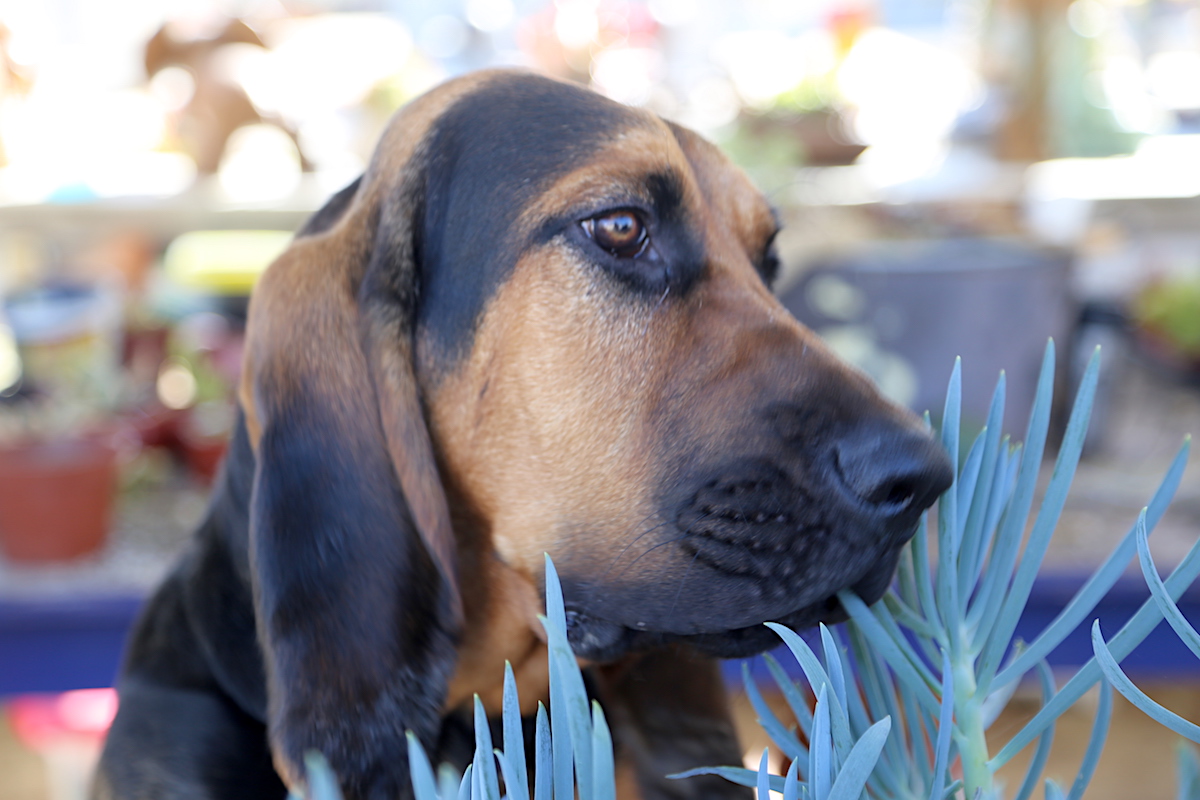
Senecio mandraliscae and bloodhound
To help you sniff out and identify senecios, I've listed varieties by their most notable characteristics: cascading, shrubs, fuzzy white, blue ground covers, and upright snakes (!). As always, I've identified and labeled plant photos according to genus and species, and common name if available. If you think any info here or elsewhere on my site is incorrect, kindly let me know.
The Cascaders
Stems trail, so display these in hanging baskets and tall pots. Propagate by laying stems atop soil, secure with fine gravel, and keep barely moist (spritz daily). Roots will form where leaves attach to stems.
Curio radicans (fish hooks, string of bananas) is the toughest, most trouble-free of the cascaders. It tolerates full sun, ideally no more than half a day, and thrives in bright shade.
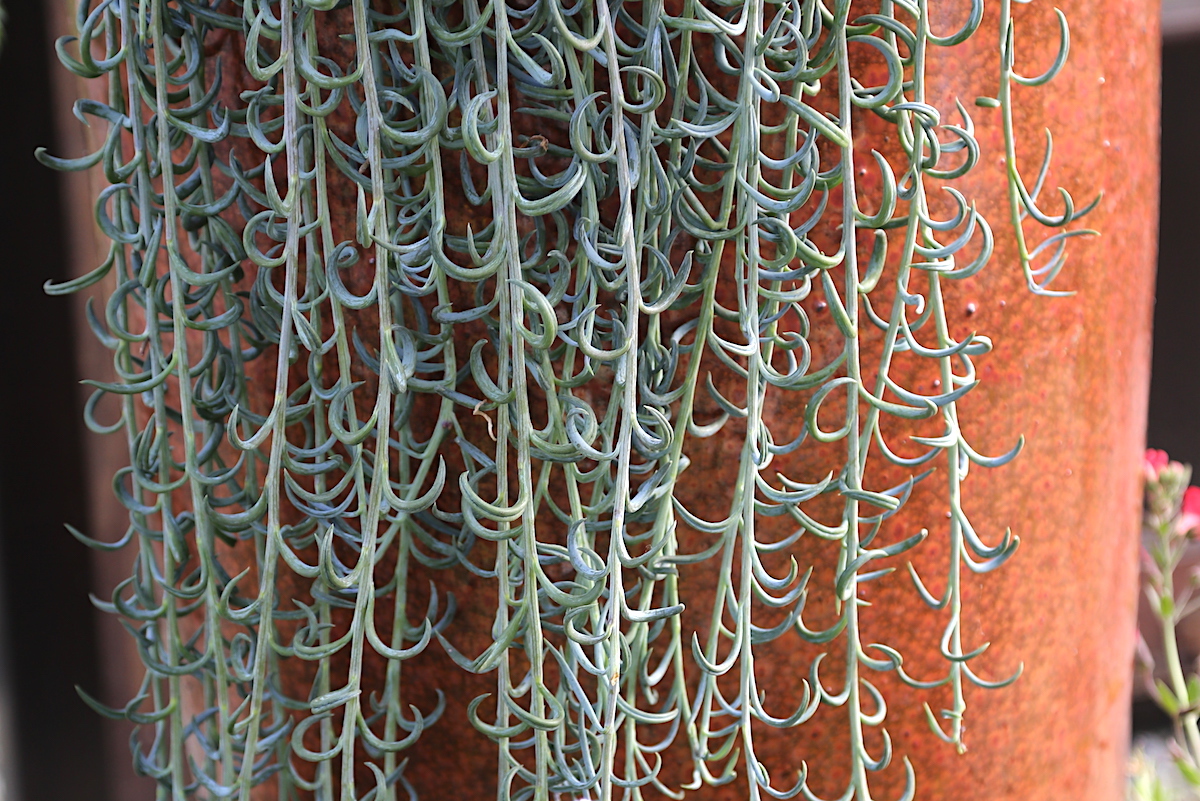
Curio radicans (Fish hooks)
Unless you live along the coast of Southern CA, where senecios do best, use fish hooks instead string of pearls to suggest falling water in succulent-planted fountains and birdbaths.
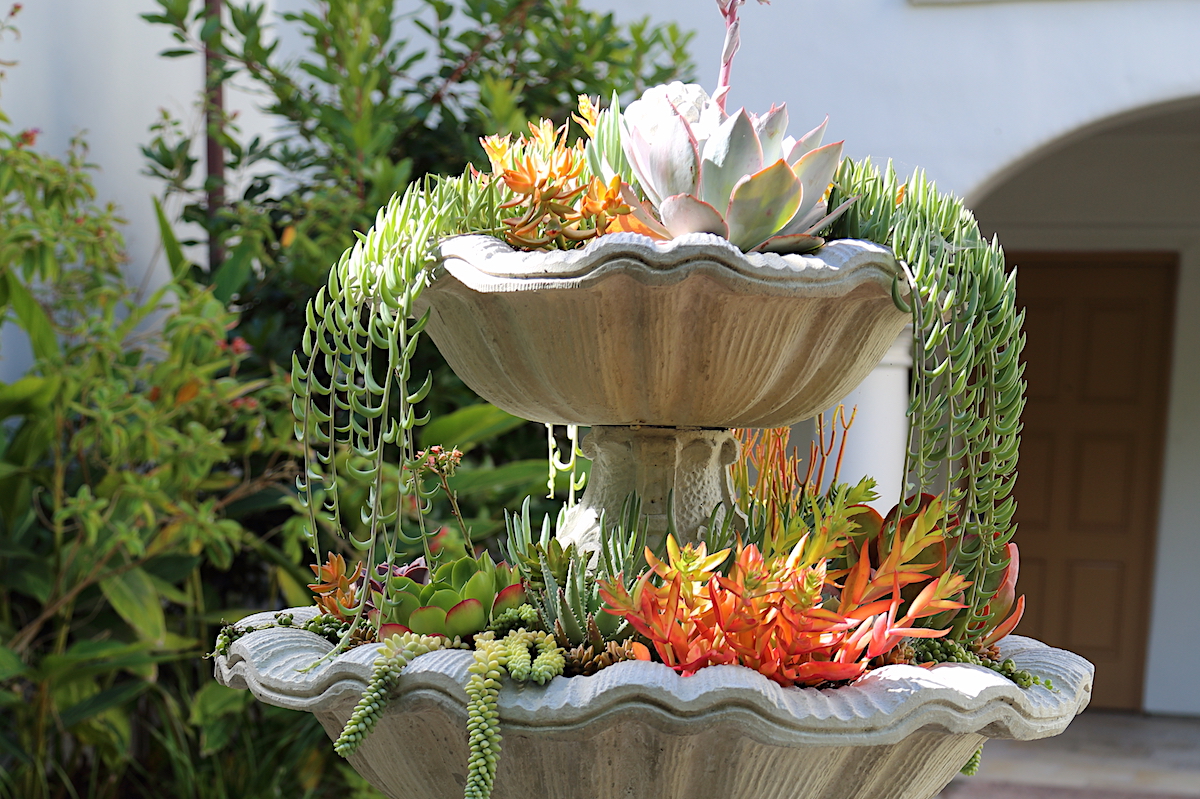
Curio radicans in fountain
Curio x peregrinus (String of dolphins), a hybrid between Curio rowleyanus and Curio articulatus, has charmed the garden world. Curved, cylindrical and pointed leaves resemble dolphins which, aligned along thin stems, look like they're leaping. Grow in dappled shade, not full sun, or indoors near a bright window. Use fast-draining "cactus mix" soil. Water thoroughly and then let go nearly dry before watering again (test with a wood chopstick).
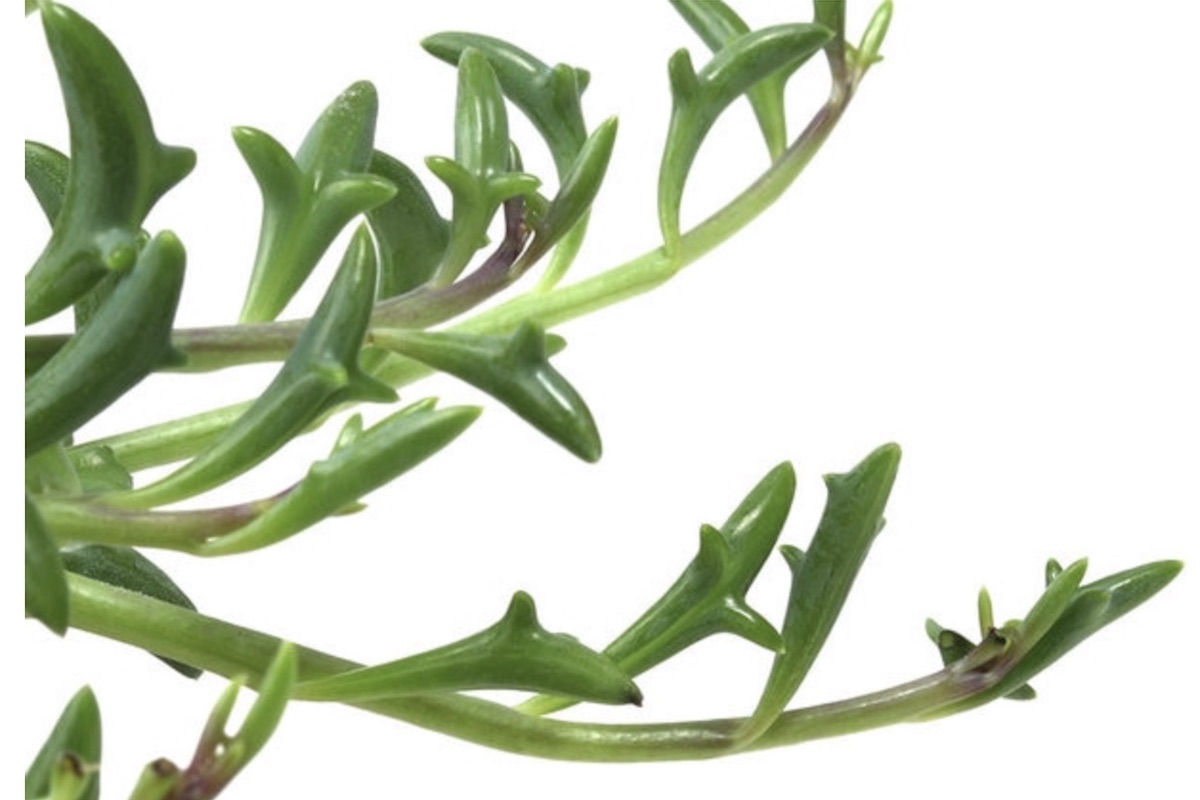
Curio x peregrinus (String of dolphins)
Curio rowleyanus (string of pearls) is arguably the most popular hanging succulent for containers. Care for it as you would string of dolphins, detailed above. Take care not to plant it in a pot with a rim so thin that it'll shear off delicate, spherical leaves as stems grow longer and heavier.
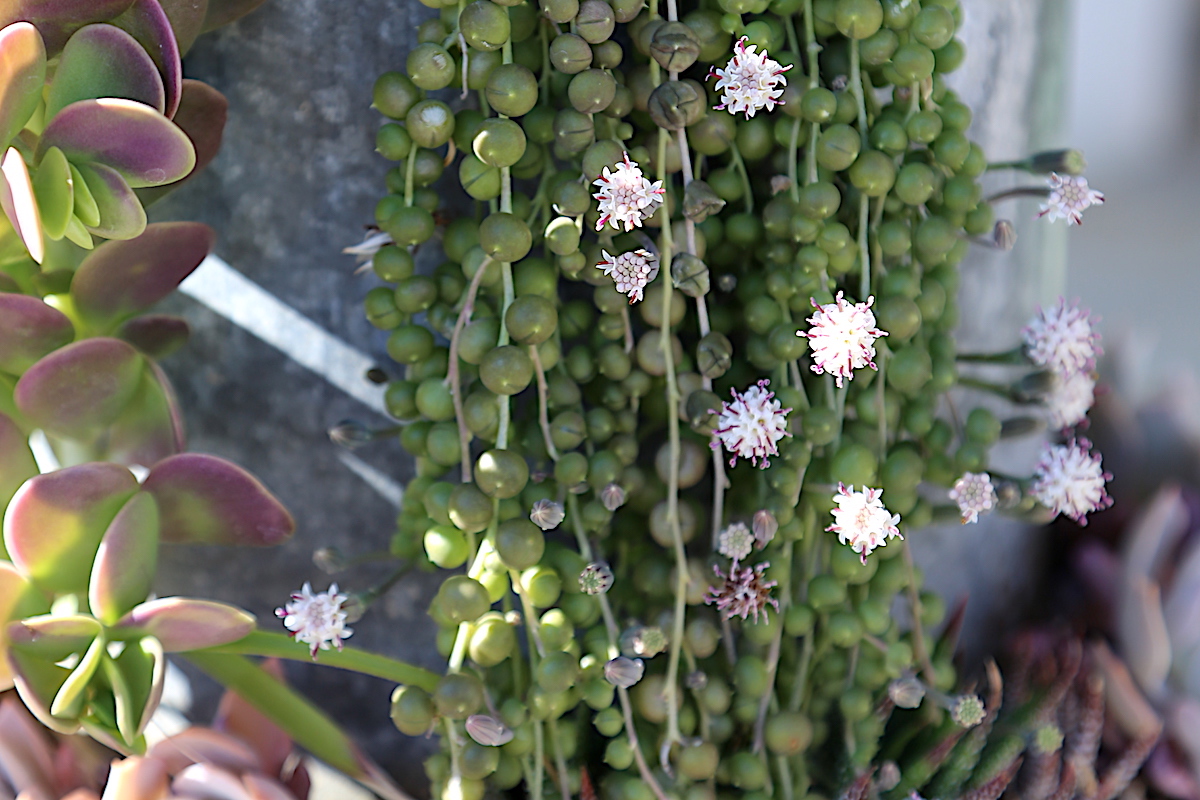
Curio rowleyanus in bloom
Curio herreanus (String of tears), with chubby leaves that appear striped, is another that suggests beads. (FYI, an inside joke among succulent collectors is "watch how you say the Latin name.")

Curio herreanus (String of tears, String of watermelons)
Senecio kleiniiformis (Spear head) has potential for being the next string of dolphins if someone comes up with an endearing animal that its winged and pointed leaves resemble. It's also a beautiful blue. In greater light, leaves shorten and plants form a tighter cluster.

Senecio kleiniiformis (Spear Head)
Senecio macroglossus looks like ivy, but its daisylike flowers give it away. Leaves have a waxy feel and though thin, are definitely succulent.
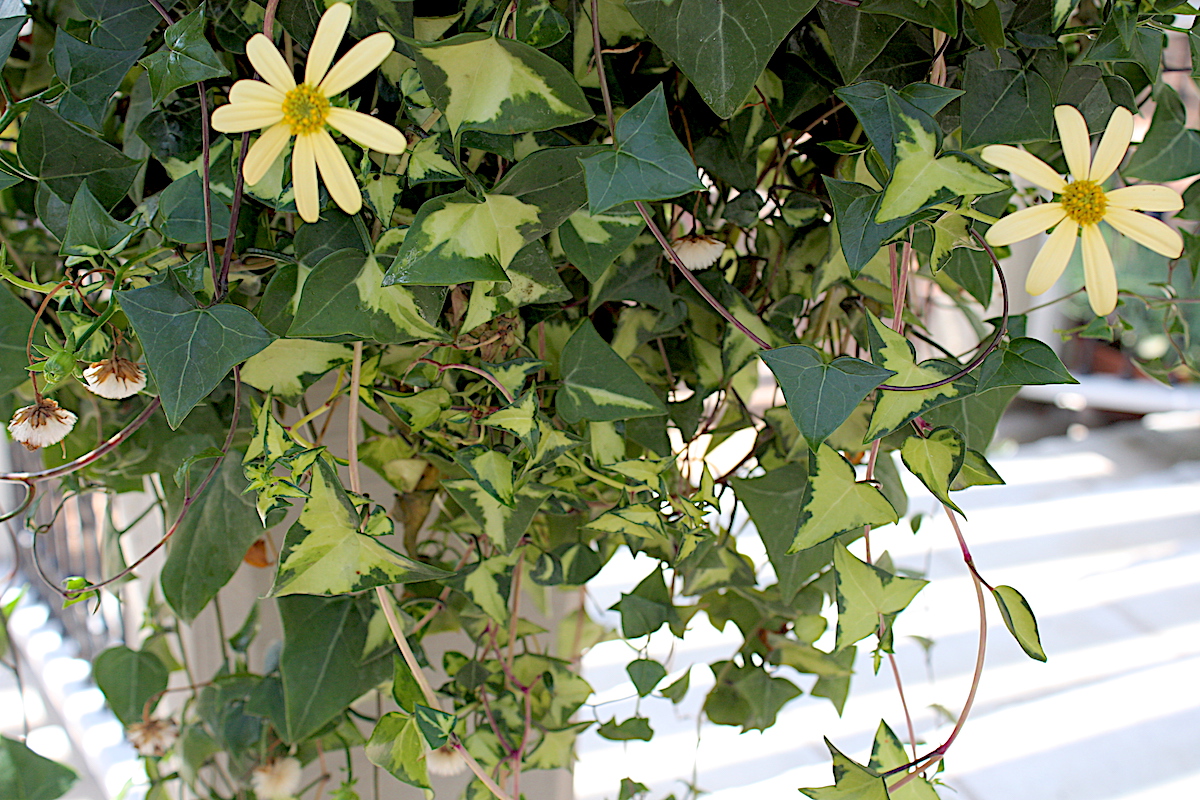
Senecio macroglossus 'Variegatus' (wax ivy)
Senecio jacobsenii turns shades of purple, lavender and pink when given adequate sunlight. Otherwise it stubbornly stays green. The plant's overlapping leaves resemble bunches of flat grapes. Has orange flowers.
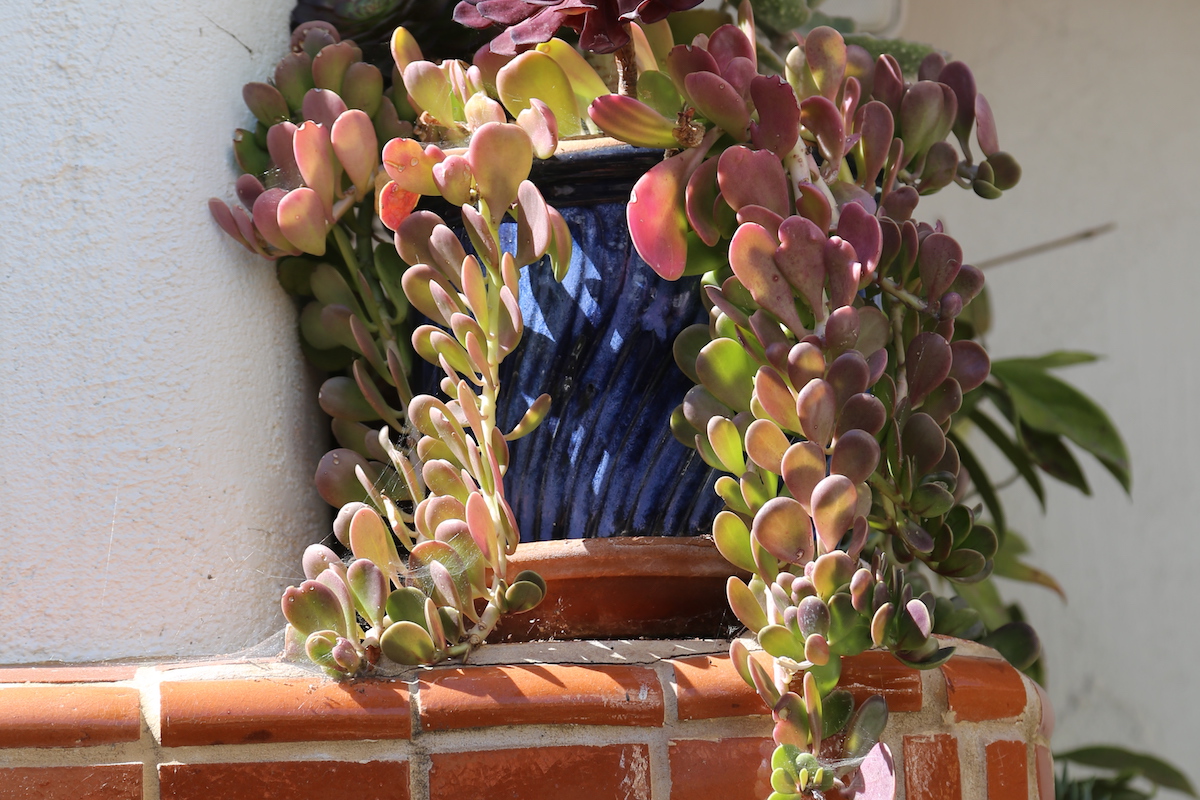
Senecio jacobsenii
Shrub senecios
Most but not all of these are good in the ground as garden plants. Stems tend to get heavy over time and may flop---the plant's way of propagating itself (roots may grow from stems that touch the ground). Prevent ungainly, rangy plants by trimming back. Where cut, stems will branch, and you can use cuttings in gaps to start new plants. See how.
Senecio anteuphorbium. Often mistaken for similar Pedilanthus macrocarpus (both have slender, cylindrical, upright green stems), Senecio anteuphorbium has faint vertical stripes, oval green leaves and of course different flowers. It grows several feet tall and makes a good vertical accent.

Senecio anteuphorbium
Senecio barbertonicus. This is your plant if you need a mounding, bright green succulent to go in the background. It's massed with clusters of yellow flowers in winter.
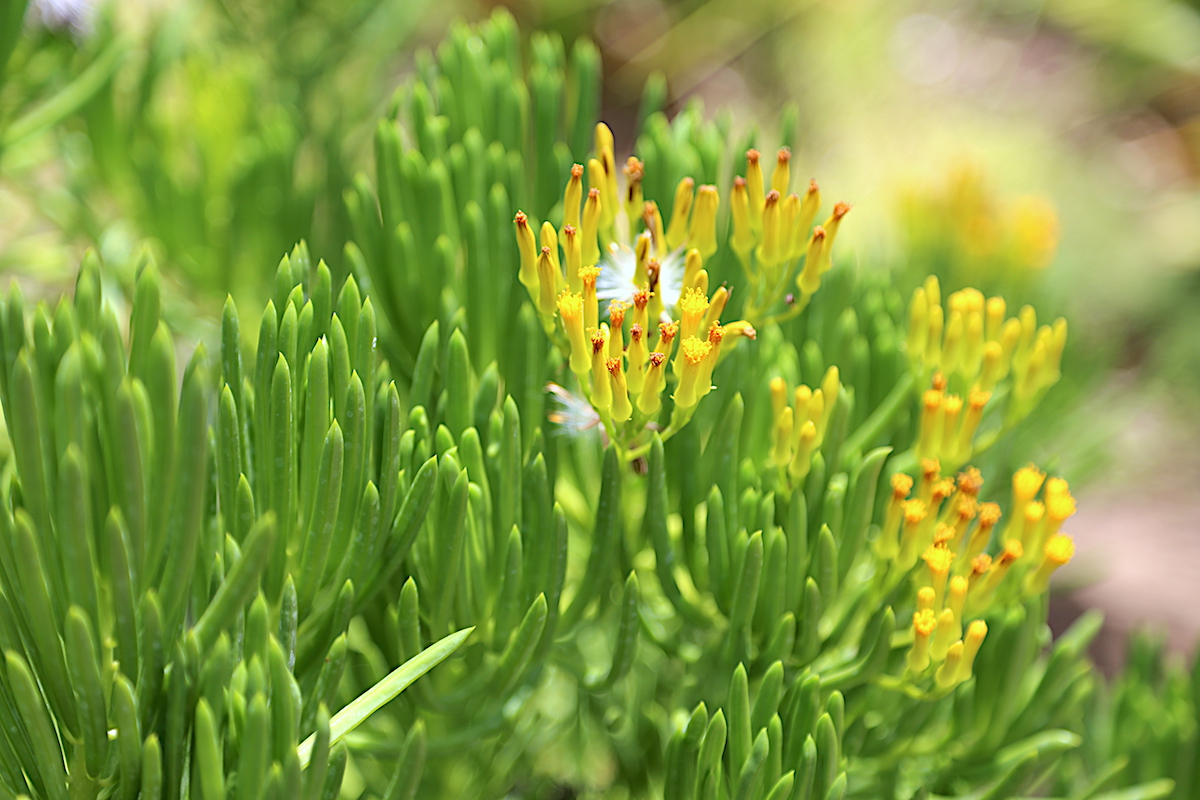
Senecio barbertonicus
Senecio cephalphorus. A good silvery-blue filler for containers that needs full sun in order to bloom---something you really want it to do. Brilliant red-orange, puffy flowers appear in early fall.
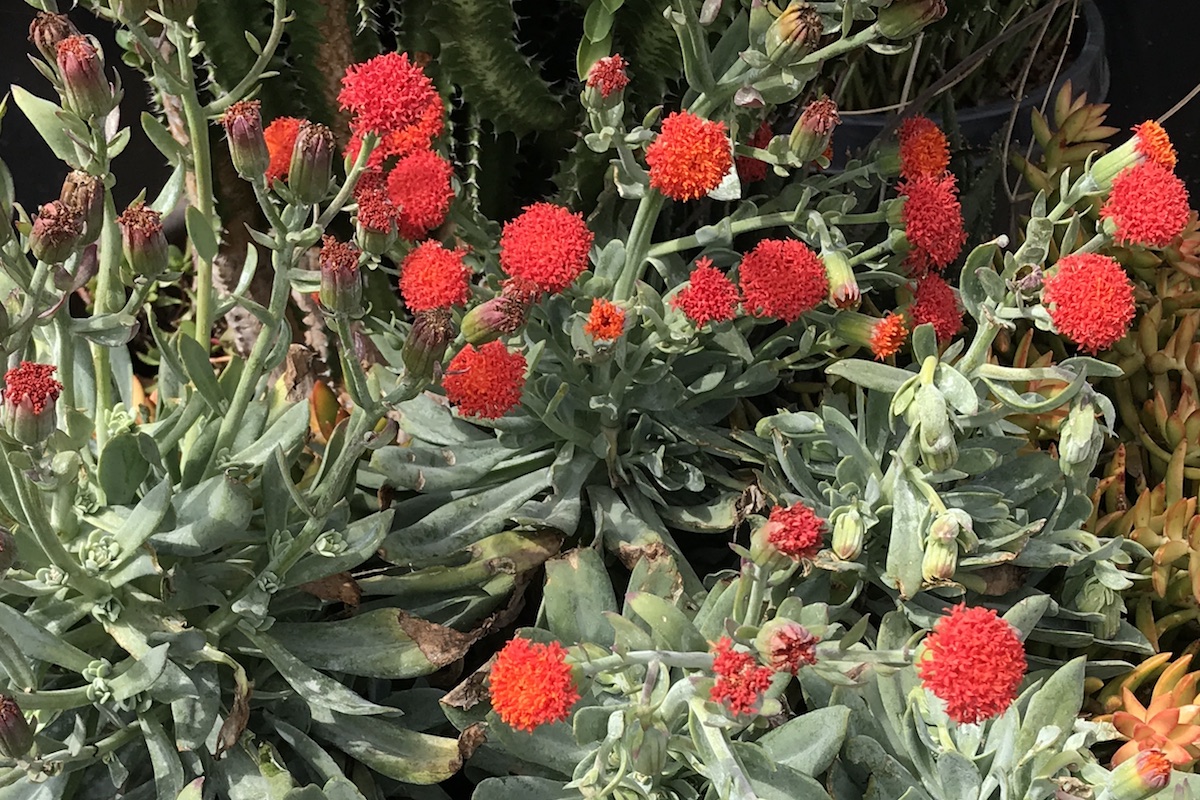
Senecio cephalophorus 'Blazin' Glory'
Senecio crassissimus. Grow these upright senecios en masse and trim back in fall so they branch. Purple edges on gray-green, pointed leaves contrast with orange flowers.
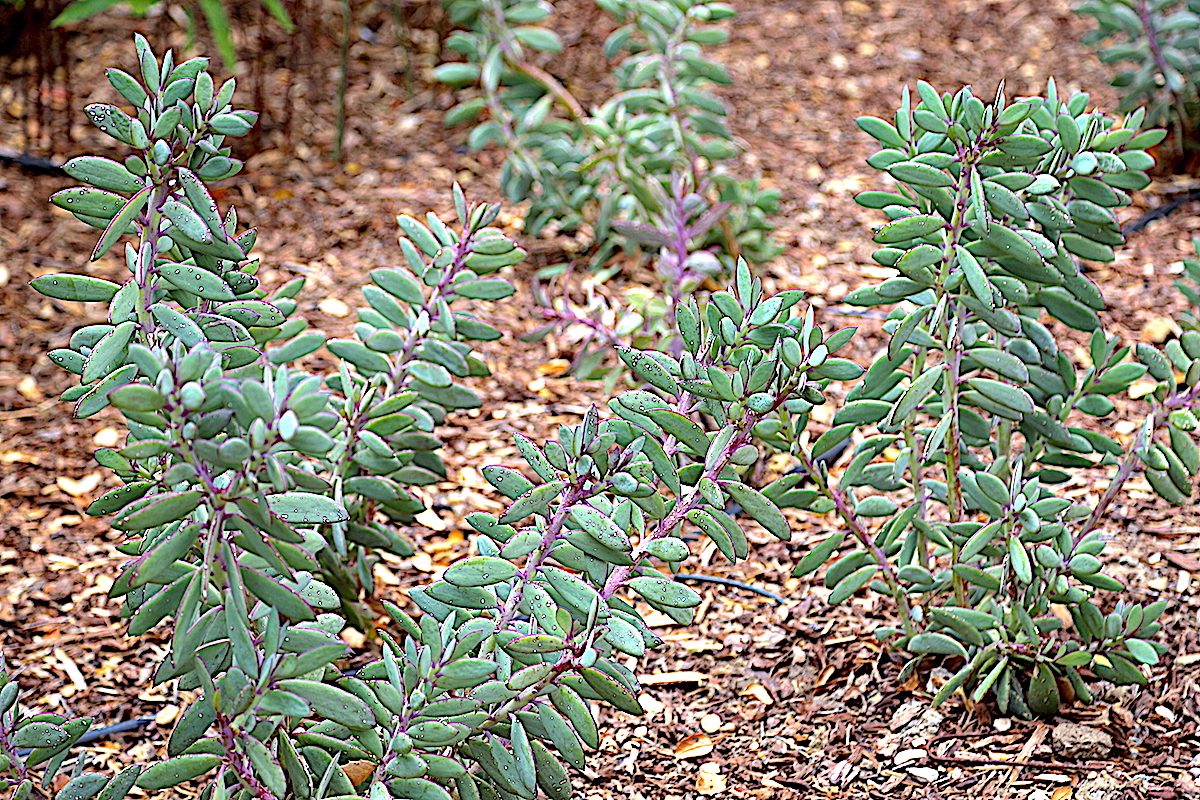
Senecio crassissimus
Senecio decaryi (Madagascar senecio). These thick-stemmed succulents have flattened, thumb-sized leaves arranged pointing upward along the stems.
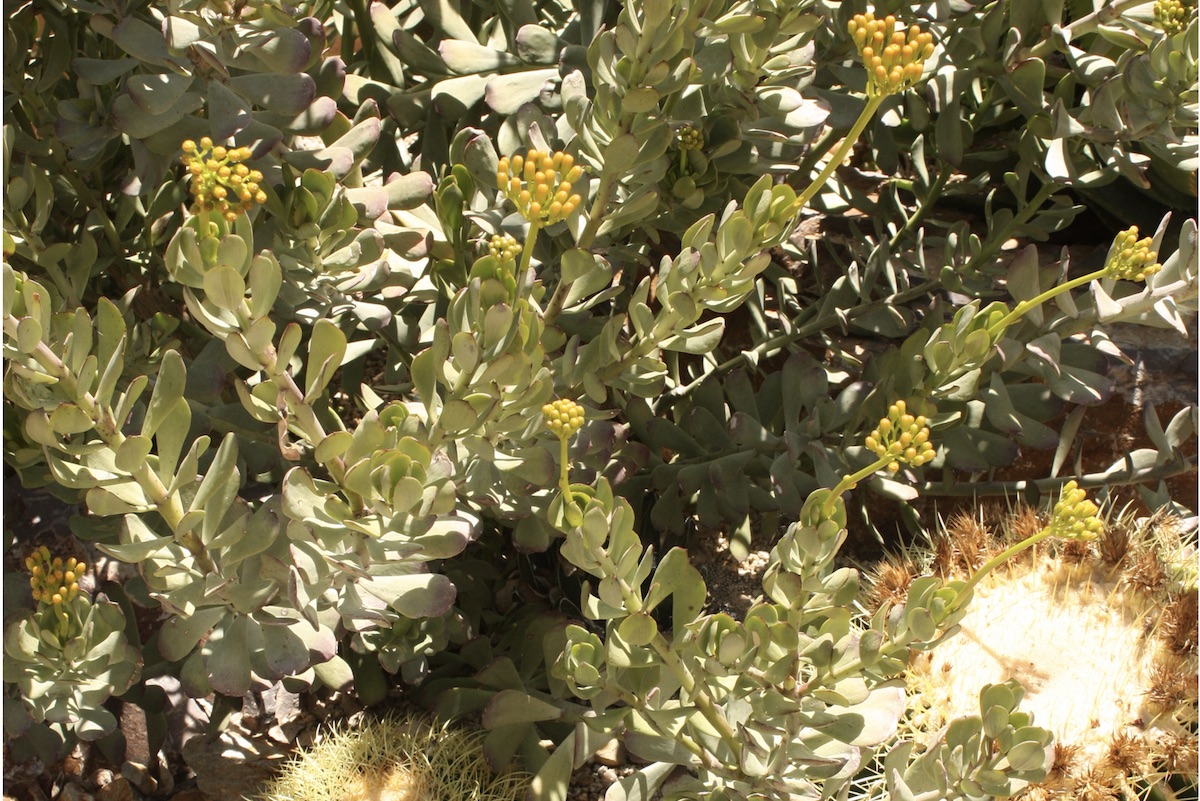
Senecio decaryi (Madagascar senecio)
Senecio vitalis, sometimes sold as Senecio cylindricus, forms a several-foot-tall mounding shrub with floppy stems. Keep compact and encourage branching by trimming the top 6 inches twice a year.
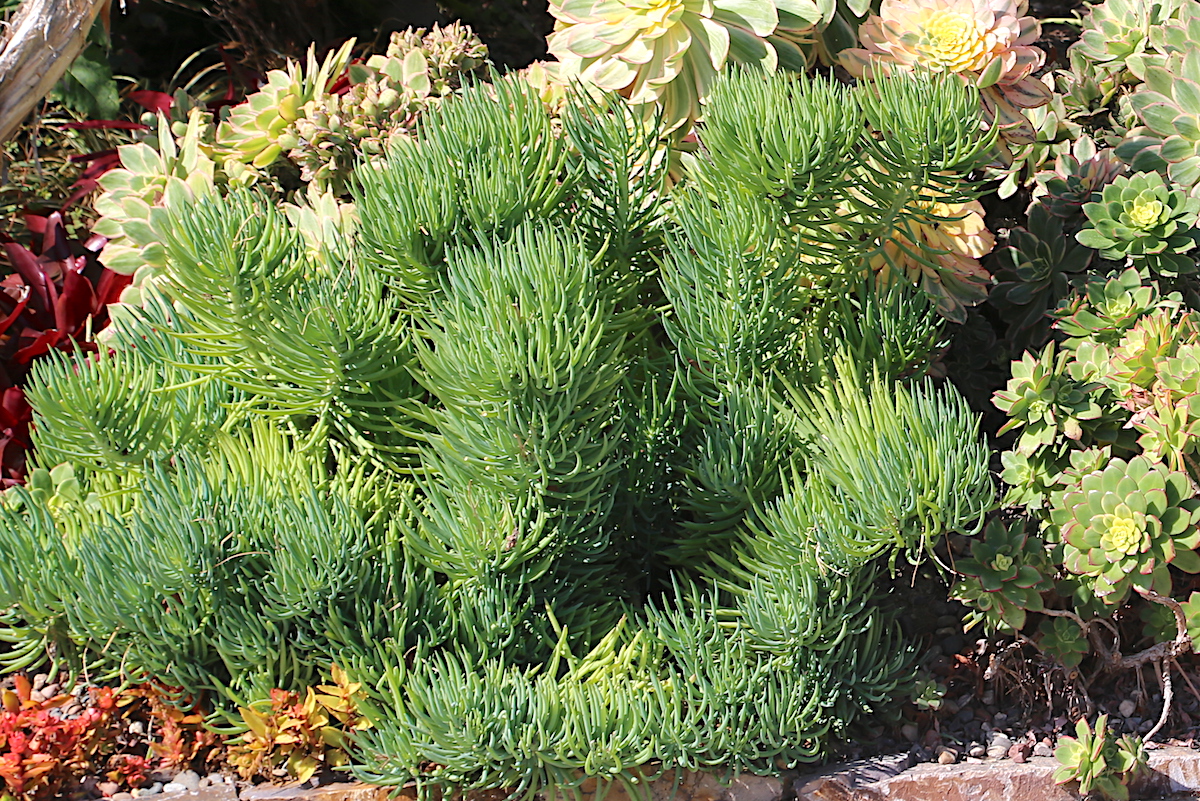
Senecio vitalis
Fuzzy white ones
These senecios have a white webbed outer layer, which covers the skin of the leaves. This gives them an intriguing cobwebby texture. They tend to be fiddly to grow, and are better off in pots.
Senecio haworthii. Highly sensitive to overwatering. I grow it as a windowsill plant and let it go bone dry between waterings. In fact, I don't water it until the leaves wrinkle.
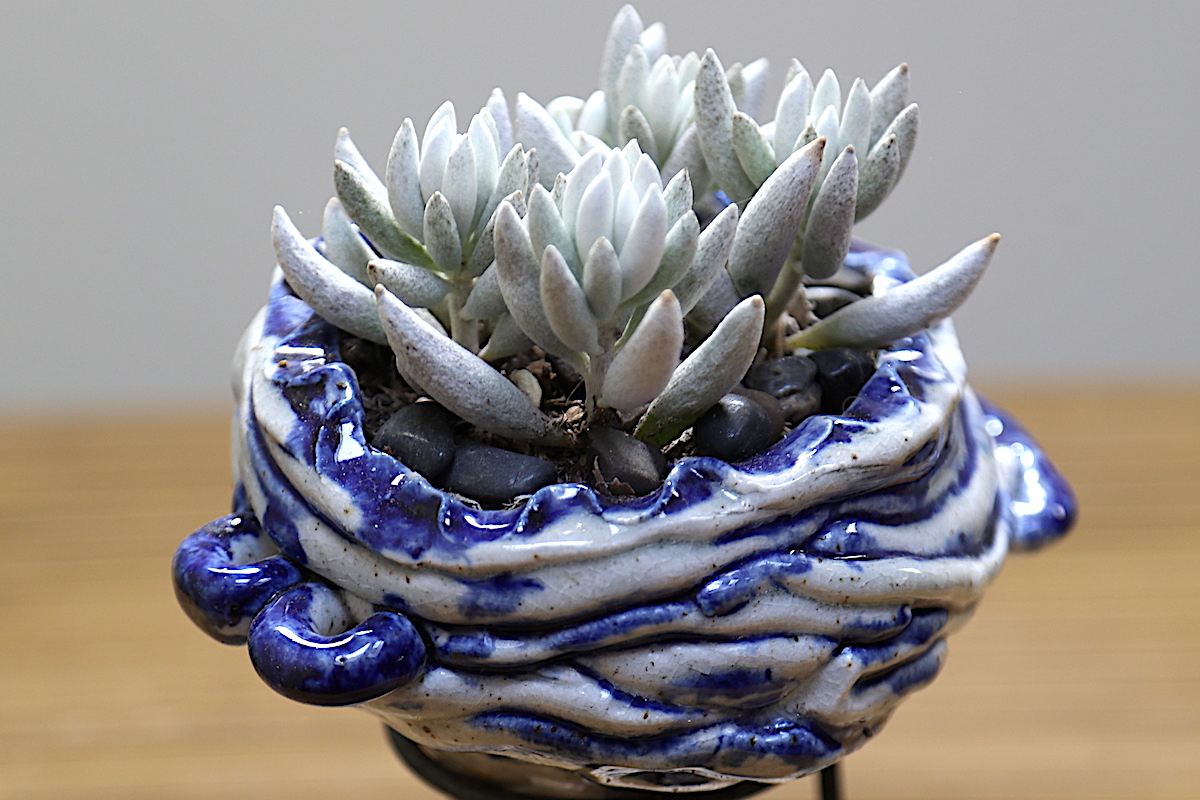
Senecio haworthii (Cocoon plant)
Senecio scaposus 'Silver Coral'. A true oddity because of the way the outer skin peels away. Yes, it's supposed to do that.
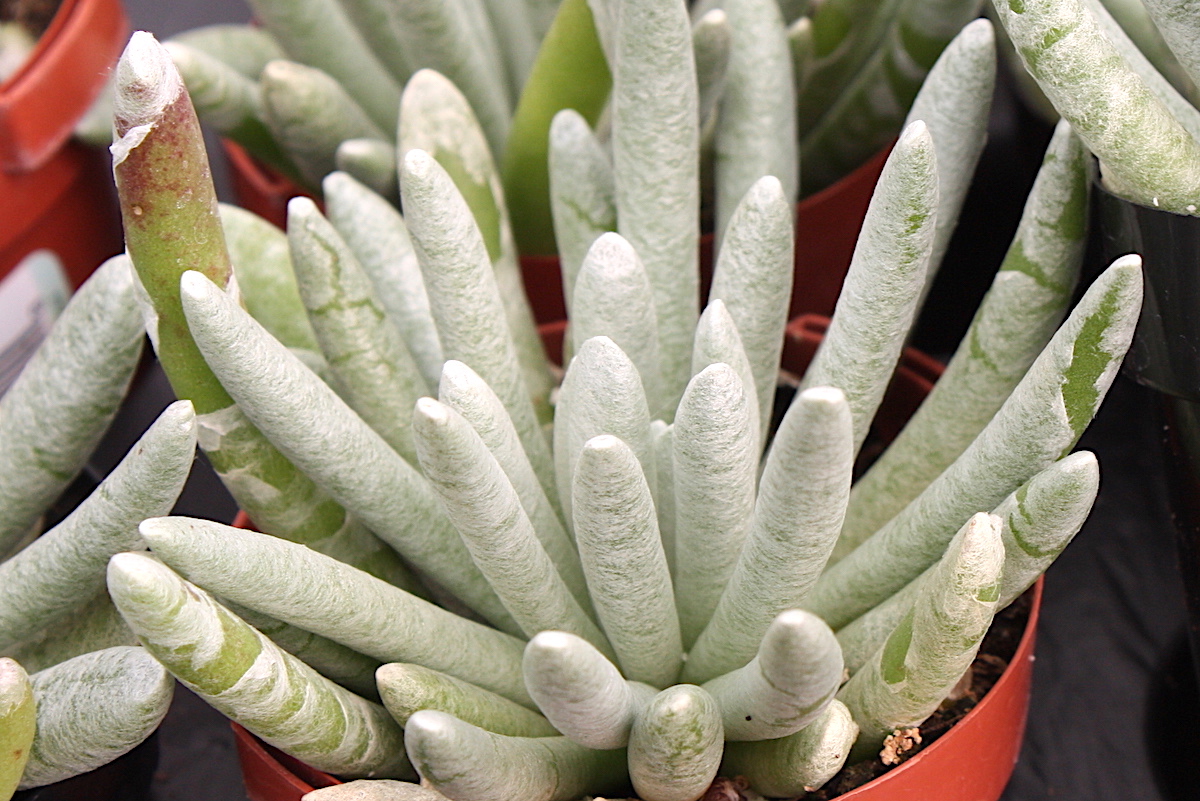
Senecio scaposus 'Silver Coral'
Senecio scaposus var. addoensis. Resembles Senecio haworthii, except its leaf tips are "spatulate" -- they look like someone flattened them with a spatula.
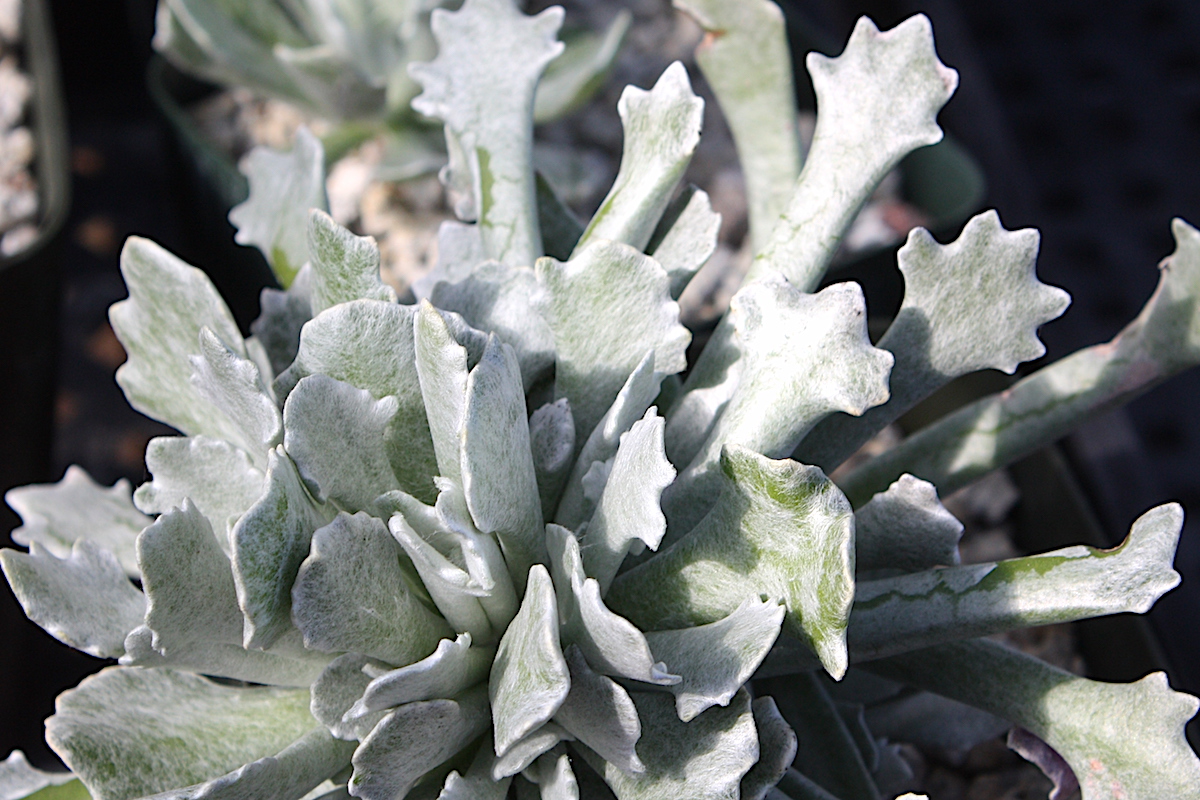
Senecio scaposus v. addoensis
Blue Ground Covers
"Blue senecios" have become hugely popular because of their azure leaves, which look amazing planted in swaths or combined with other primary-colored plants. A classic combination is blue senecio with yellow jade and red aloes.
Curio talinoides var. mandraliscae (Senecio mandraliscae, blue chalk sticks). A low-growing (to 12 inches) filler for gardens. Grows upright at first, then falls and creeps along the ground. Needs annual trimming to look good (see how).
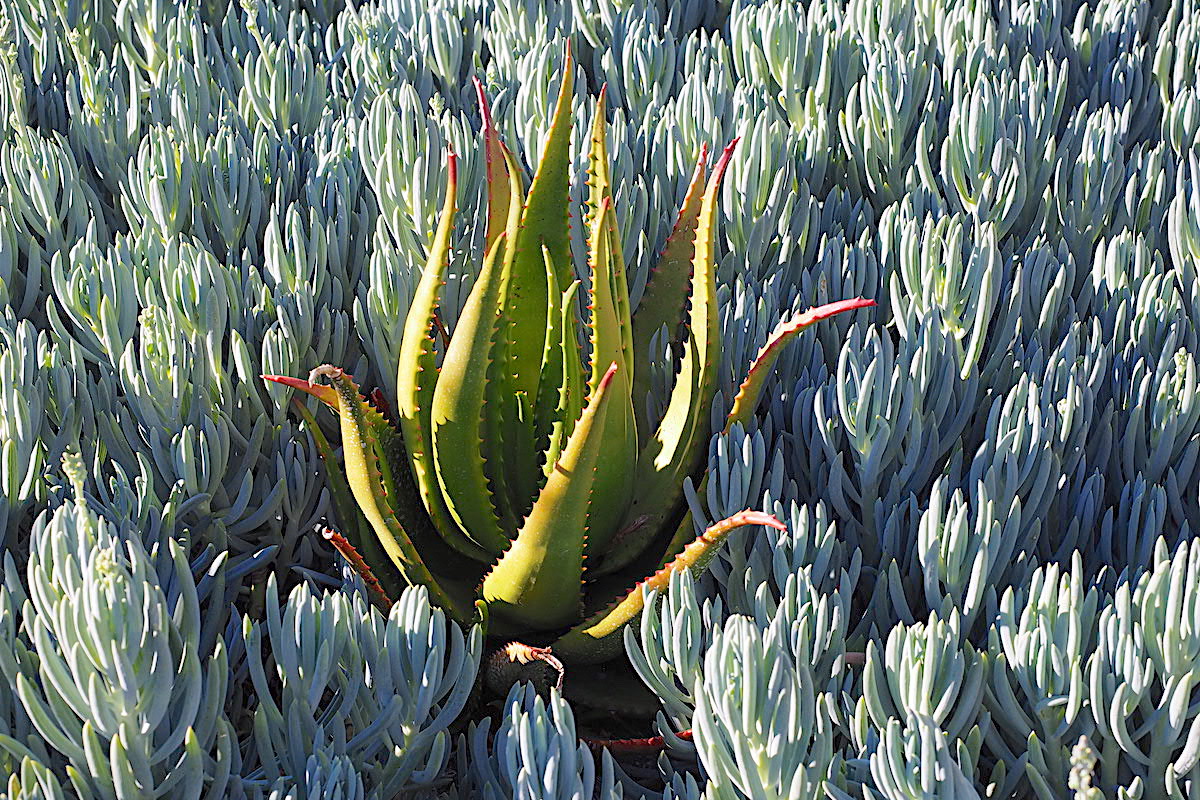
Senecio mandraliscae and aloe
Curio repens (Senecio serpens). This smaller cousin of Senecio mandraliscae is an ideal pot-filler. Does well in the ground, too, but is notoriously slow-growing.
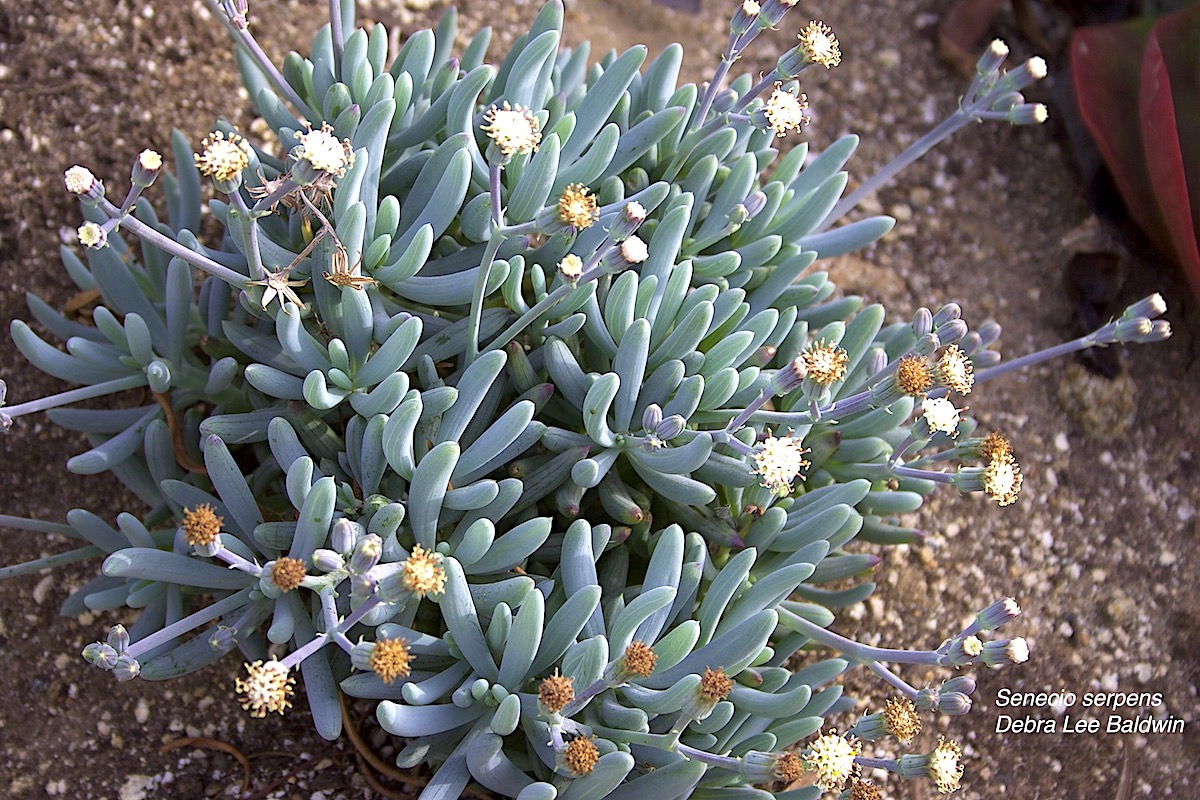
Senecio serpens
Upright Snakes
These may be the oddest of all senecios. Upright stems are jointed like sausages, are striped or lined, and leaves emerge like topknots at tips. Propagate by twisting off a link and setting it upright in soft soil.
Curio articulatus (candle plant). I've grown this for years and visitors invariably exclaim over it. Recently (and happily) I acquired the variegate, shown here. Those purple leaves!
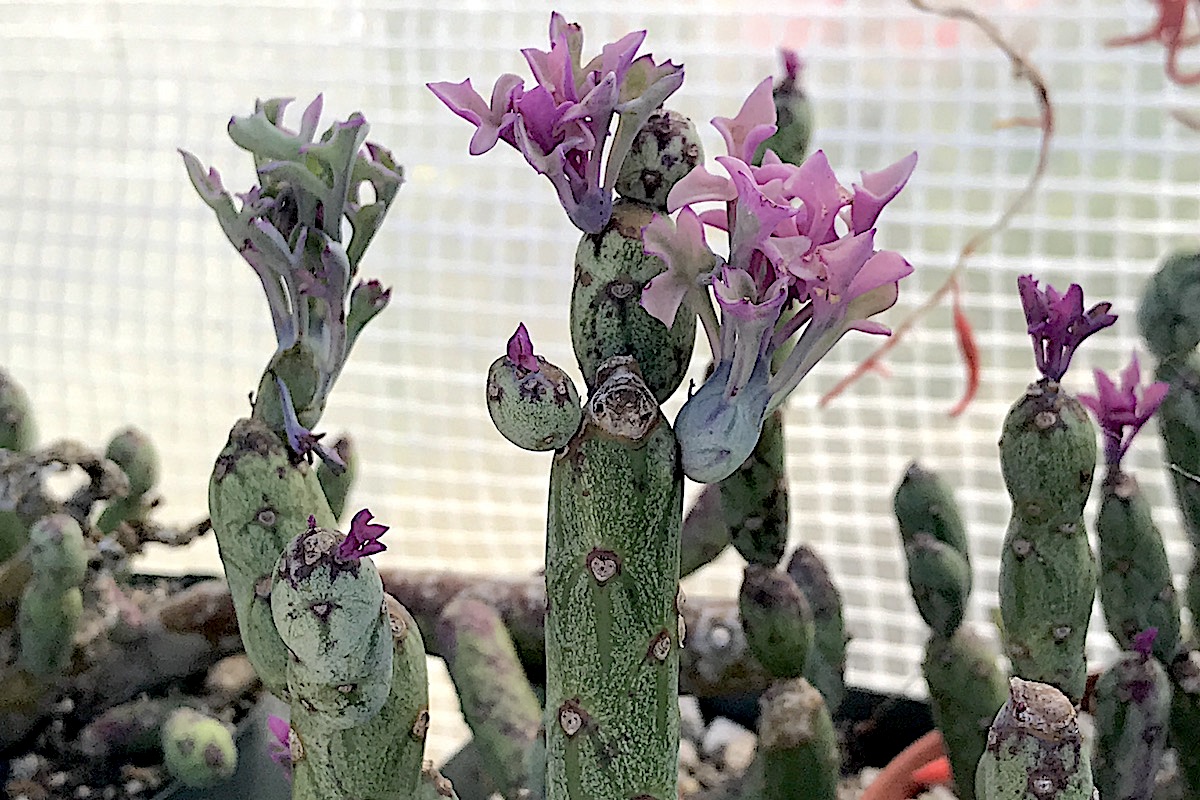
Senecio articulatus 'Variegatus' (Variegated candle plant)
Senecio stapeliiformis. So named because it resembles succulents in the genus Stapelia.
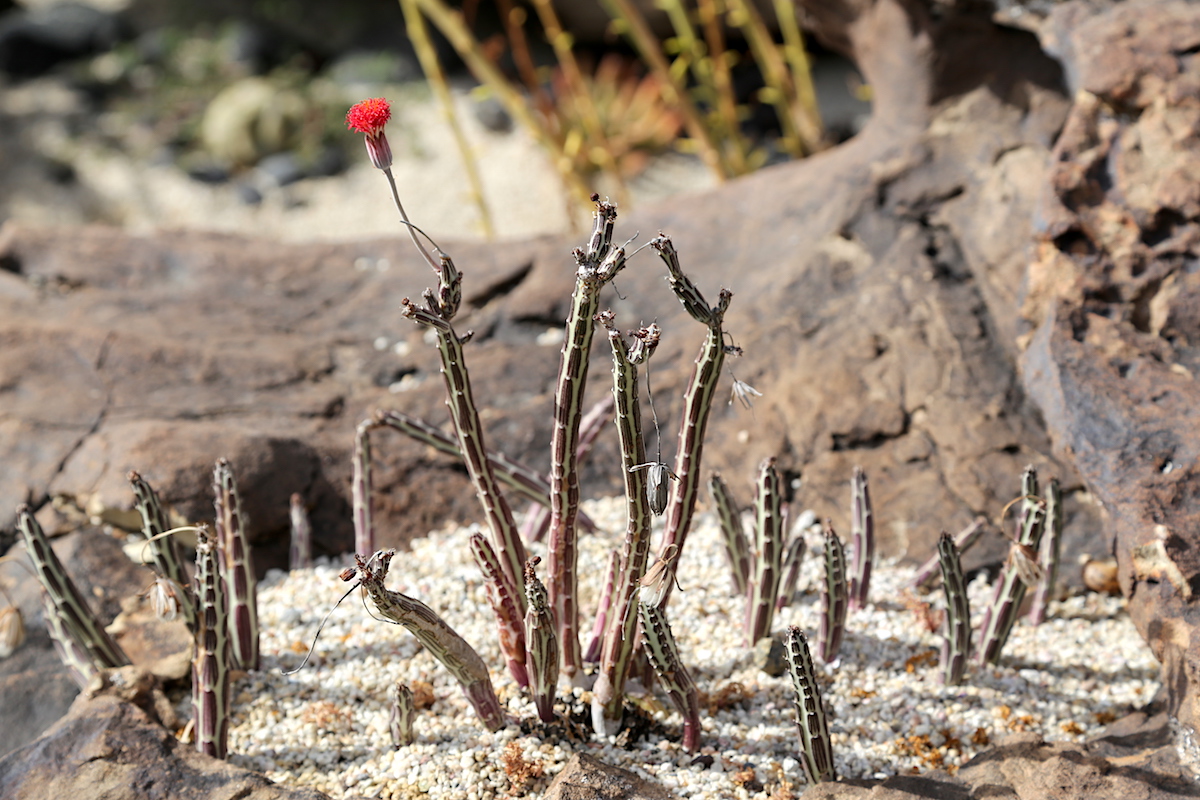
Senecio stapeliiformis in the undersea-themed garden at Scripps Institute, La Jolla, CA
Resources
Online*
Southern CA sources
See Debra's Nursery List
Videos
How to Refresh a Succulent Hanging Basket (4:37)
Trim and Replant Succulent Aeoniums and Senecios (2:22)
Articles
My Books
Designing with Succulents (2nd ed) pp. 236-237; Succulents Simplified, p. 252 ; and Succulent Container Gardens, pp. 126-128.
*affiliate links
Types of Succulents from Aeonium to Zebra Plant, Photos & IDs
Debra’s Dozen Easy-Grow Succulent Plants for Beginners
Trying to make sense out of succulents? There are numerous varieties, but these are the most common succulents and those you’ll likely run across. Enjoy growing and discovering these fascinating “plants that drink responsibly!”

-custom_crop.jpg)